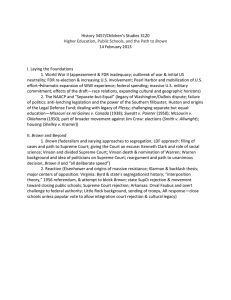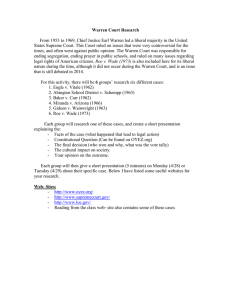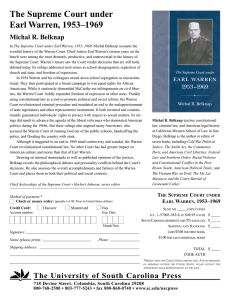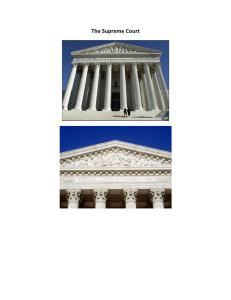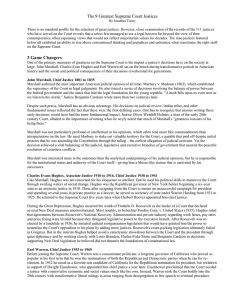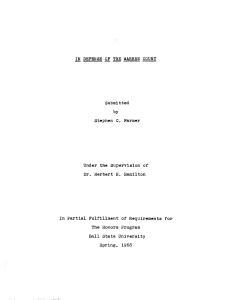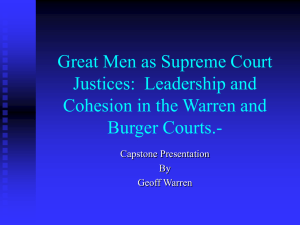the warren court 1953 -1969
advertisement
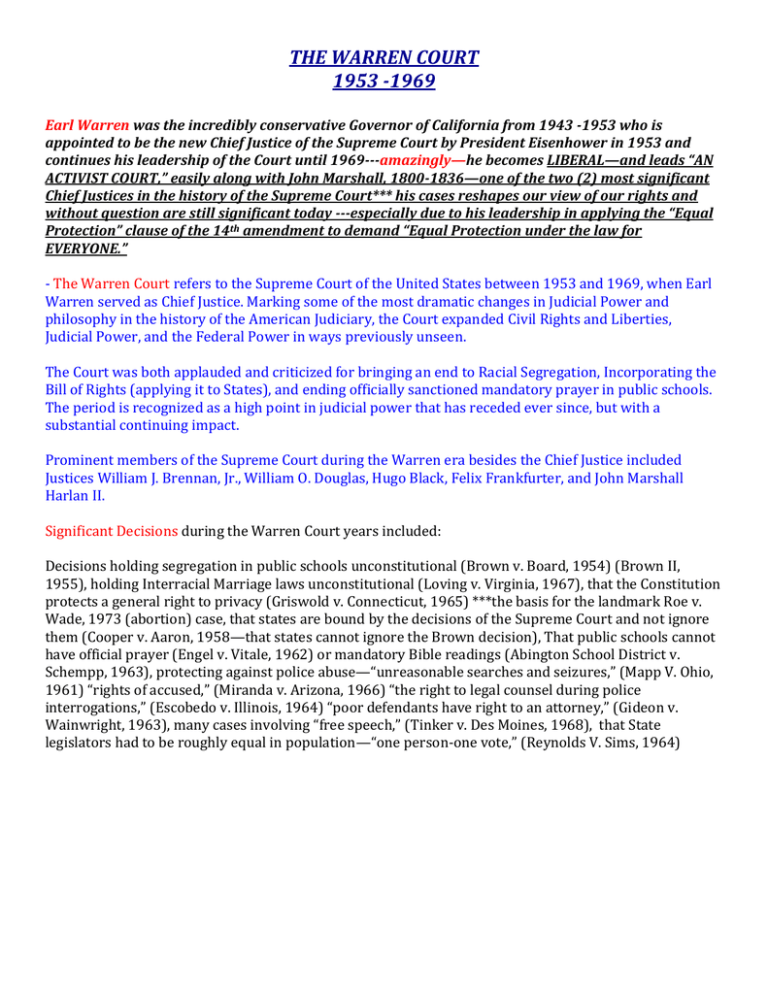
THE WARREN COURT 1953 -1969 Earl Warren was the incredibly conservative Governor of California from 1943 -1953 who is appointed to be the new Chief Justice of the Supreme Court by President Eisenhower in 1953 and continues his leadership of the Court until 1969---amazingly—he becomes LIBERAL—and leads “AN ACTIVIST COURT,” easily along with John Marshall, 1800-1836—one of the two (2) most significant Chief Justices in the history of the Supreme Court*** his cases reshapes our view of our rights and without question are still significant today ---especially due to his leadership in applying the “Equal Protection” clause of the 14th amendment to demand “Equal Protection under the law for EVERYONE.” - The Warren Court refers to the Supreme Court of the United States between 1953 and 1969, when Earl Warren served as Chief Justice. Marking some of the most dramatic changes in Judicial Power and philosophy in the history of the American Judiciary, the Court expanded Civil Rights and Liberties, Judicial Power, and the Federal Power in ways previously unseen. The Court was both applauded and criticized for bringing an end to Racial Segregation, Incorporating the Bill of Rights (applying it to States), and ending officially sanctioned mandatory prayer in public schools. The period is recognized as a high point in judicial power that has receded ever since, but with a substantial continuing impact. Prominent members of the Supreme Court during the Warren era besides the Chief Justice included Justices William J. Brennan, Jr., William O. Douglas, Hugo Black, Felix Frankfurter, and John Marshall Harlan II. Significant Decisions during the Warren Court years included: Decisions holding segregation in public schools unconstitutional (Brown v. Board, 1954) (Brown II, 1955), holding Interracial Marriage laws unconstitutional (Loving v. Virginia, 1967), that the Constitution protects a general right to privacy (Griswold v. Connecticut, 1965) ***the basis for the landmark Roe v. Wade, 1973 (abortion) case, that states are bound by the decisions of the Supreme Court and not ignore them (Cooper v. Aaron, 1958—that states cannot ignore the Brown decision), That public schools cannot have official prayer (Engel v. Vitale, 1962) or mandatory Bible readings (Abington School District v. Schempp, 1963), protecting against police abuse—“unreasonable searches and seizures,” (Mapp V. Ohio, 1961) “rights of accused,” (Miranda v. Arizona, 1966) “the right to legal counsel during police interrogations,” (Escobedo v. Illinois, 1964) “poor defendants have right to an attorney,” (Gideon v. Wainwright, 1963), many cases involving “free speech,” (Tinker v. Des Moines, 1968), that State legislators had to be roughly equal in population—“one person-one vote,” (Reynolds V. Sims, 1964)

